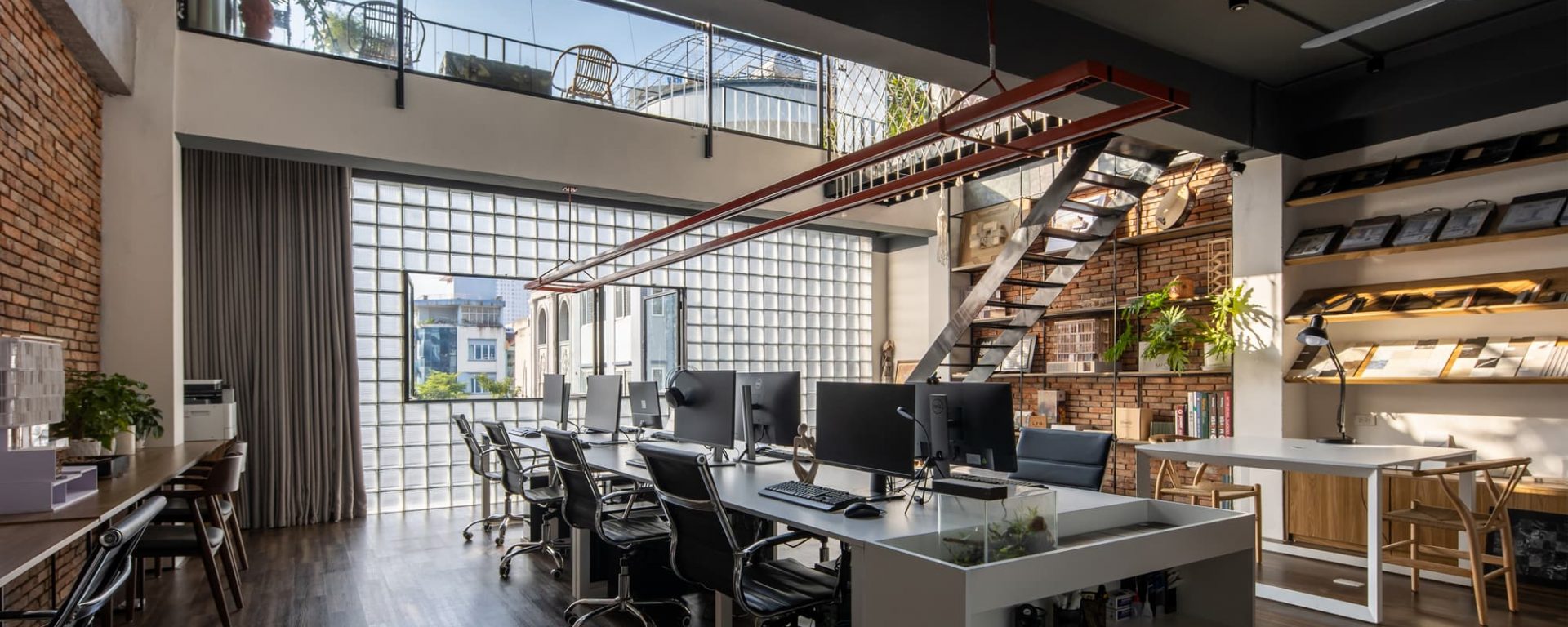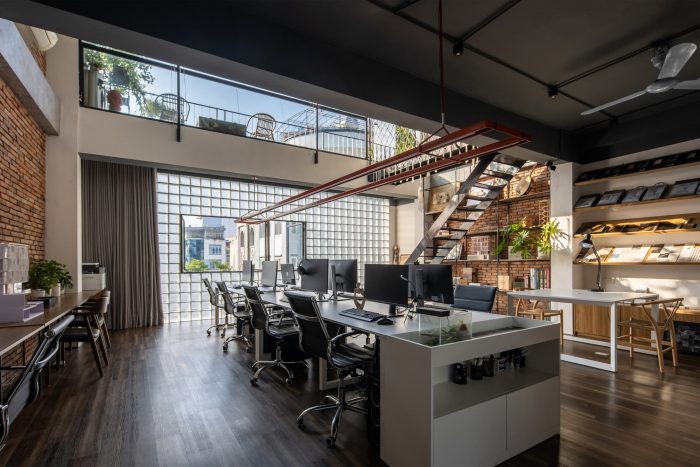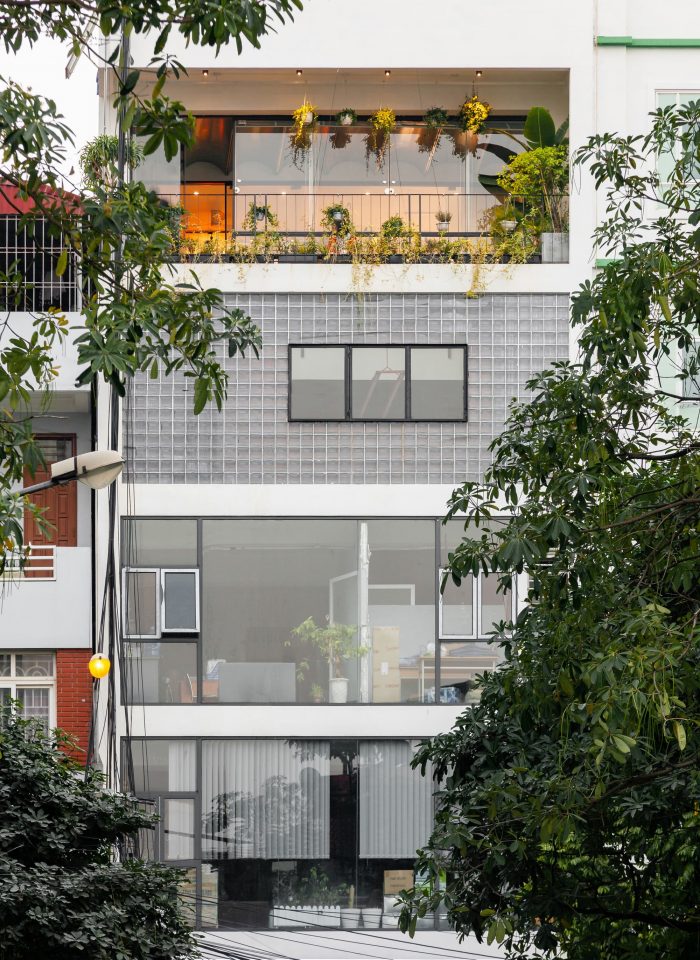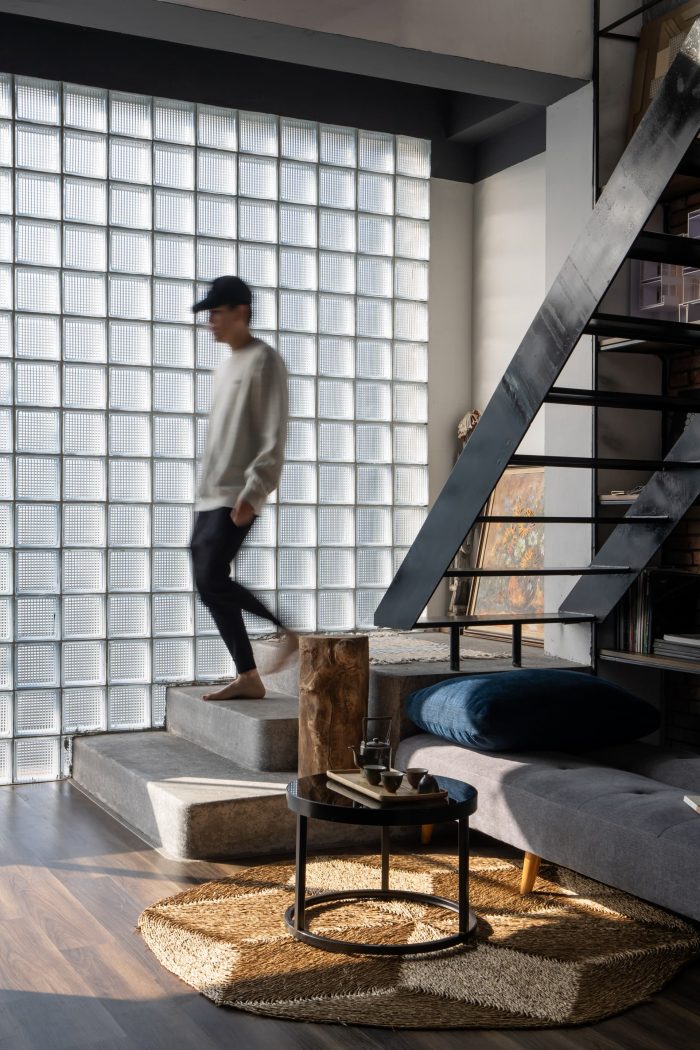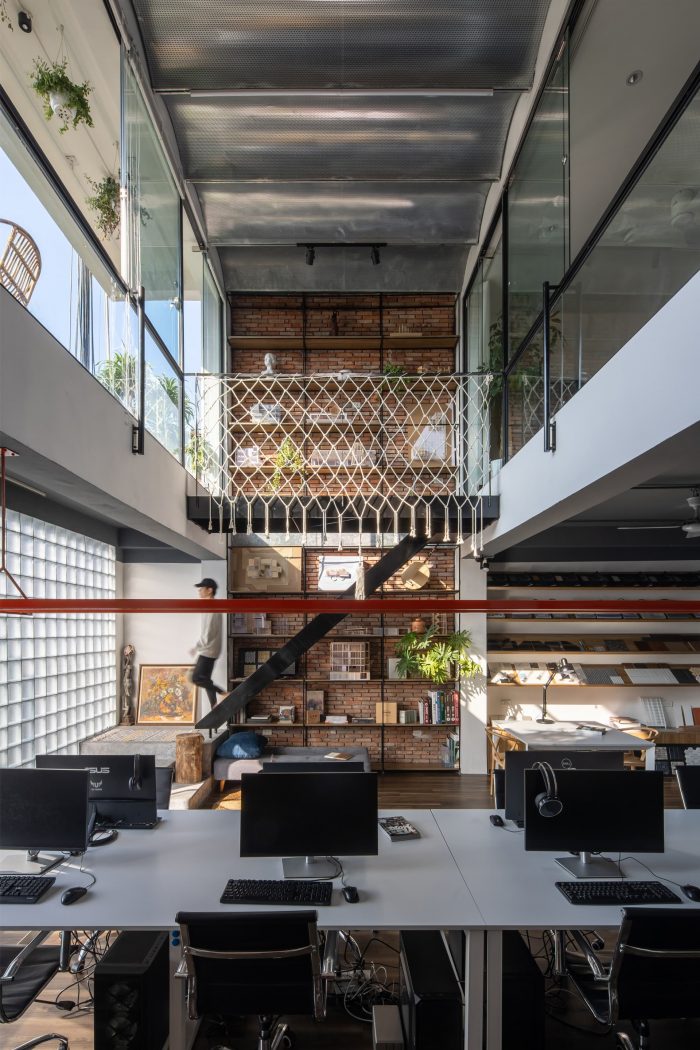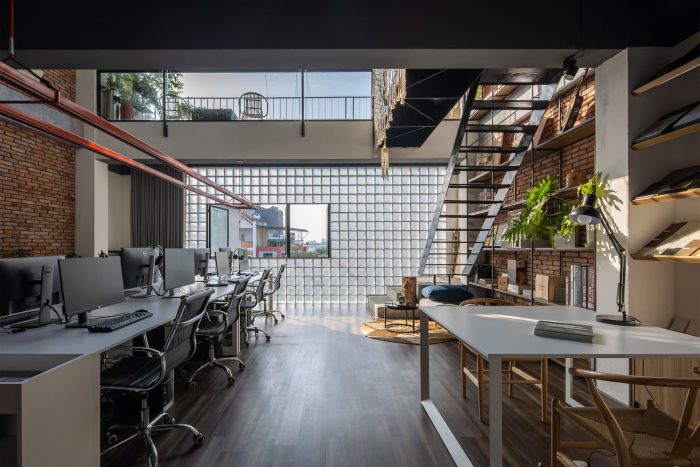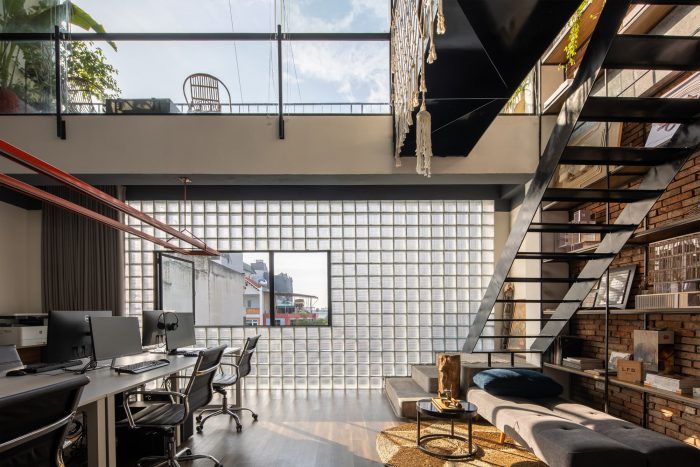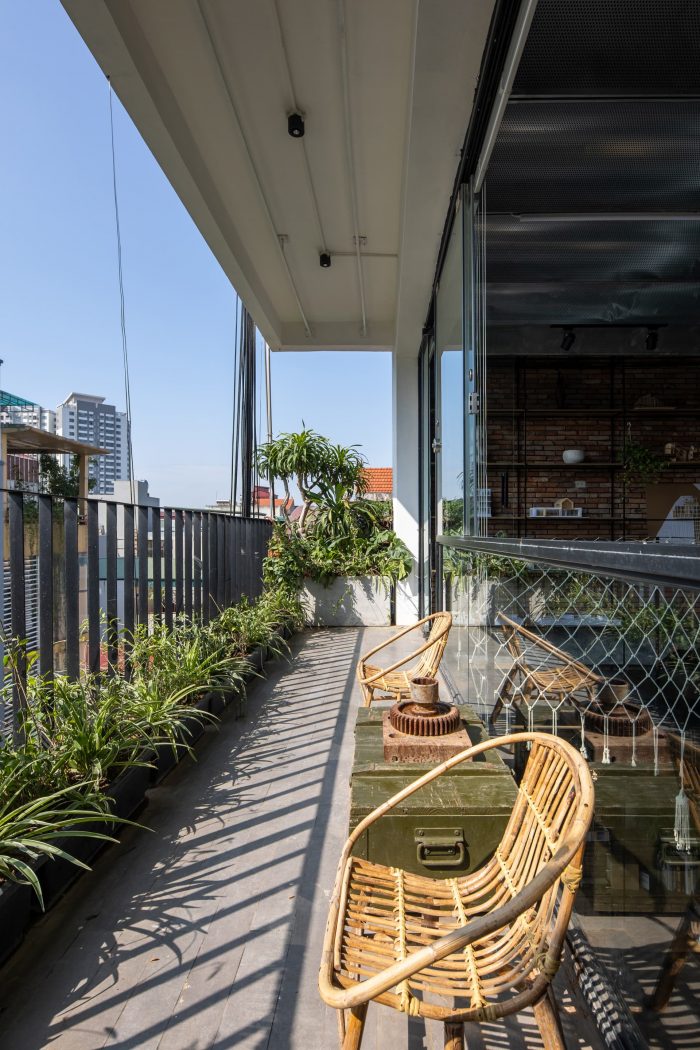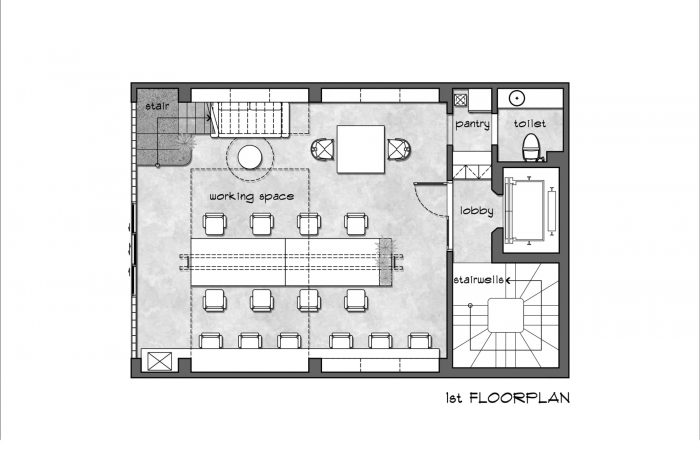办公室是我们一天中1/3时间工作、学习和社交的地方。因此,创造一个具有独特的、科学的、包含积极情感的、激发灵感和工作动力的办公室是必要的。而更关键的是,当这是一个年轻的设计单位,”PAK建筑师 “的办公室时。PAK办公室是一个位于河内的装修项目,在一栋有7层的相对较小的建筑里有两层,每层的面积约为80平方米。最初,这两层楼是相互独立出租的。设计时要解决的主要问题是越南小规模办公室设计连接和热带空间的常见问题。
The office is where we spend 1/3 of the day working, learning, and socializing. Therefore, creating an office with a unique, scientific design that contains positive emotions and inspires inspiration and work motivation is necessary. And more critically, when this is an office for a young design unit, “PAK architects.” PAK Office is a renovation project in Hanoi with two floors in a relatively small building having 7-storey, each floor having an area of about 80m2. Initially, the two floors were leased independently of each other. The main problems to be solved when designing are common problems in Vietnam’s small-scale office designing connectivity and tropical space.
我们希望在两层楼之间创造一个开放和连接的空间,同时,充分利用外墙的自然光。因此,2楼的一部分被拆除,在办公室的中心形成一个5米高的楼层间隙的空间,扩大并连接了内部员工的视野;同时,自然光可以深入到空间中。然后增加了钢梯系统、书架和模型架,形成楼层之间的交通联系;两者都是视觉亮点。建筑模型的架子是保存研究和设计过程成果的地方,也是空间的主要装饰元素。
We want to create an open and connected space between the two floors and, simultaneously, make the most of the natural light from the façade. So, a part of the 2nd floor is demolished, forming a space 5 meters high floor clearance at the center of the office, expanding and linking the view of employees inside; at the same time, natural light can penetrate deep into the space. Then the steel ladder systems, bookshelves, and model shelves are added to create traffic links between floors; both are visual highlights. Shelves of architectural models are a place to save the research and design process results and the main decorative element for the space.
办公室的外墙面向东南,采用了玻璃砖和树木的双表皮法设计,以控制进入建筑的直射光量,同时在整个空间创造出柔和的散射光。双层皮肤法也减少了越南热带气候下的空调使用。玻璃砖还创造了令人兴奋的光线效果,随着一天中每个小时的变化而变化。从外部的角度来看,大量的玻璃砖也为办公室本身带来了视觉识别。
The office’s façade faces Southeast and is designed using the double skin method with glass tiles and trees to control the amount of direct light entering the building while creating soft scattered light throughout the space. The double skin method also reduces the use of air conditioners in tropical climates in Vietnam. Glass tiles also create exciting light effects that change with each hour of the day. From an outside perspective, an extensive array of glass tiles also makes a visual identity for the office itself.
在种植树木的面积方面,Loggia被最大化了;在办公室的任何地方都可以看到它,它是一个放松和休息的地方,成员们在工作时间以外的地方聚会和交谈。从那时起,它提高了生产力,并在办公室的成员之间建立了精神联系。作为越南小型办公室设计方案的例子之一,PAK办公室提供了一个空间来增加办公室成员之间的联系和创造力,同时也解决了越南的热带问题。我们的目标是在未来建立一个可持续发展的办公室。
Loggia is maximized in terms of the area to plant trees; it can be seen anywhere in the office and is a place to relax and rest members, where they meet and talk outside working hours. Since then, it has increased productivity and created a spiritual connection between members in the office. As one of the examples of small office design solutions in Vietnam, the PAK office provides a space to increase connectivity and creativity among office members while also solving tropical problems in Vietnam. We aim for a sustainable office in the future.
Architects: PAK Architects
Area : 150 m²
Year : 2021
Photographs :Hoang Le
Lead Architects : Nguyen Thanh Phuong
Design Team : Nguyen Thanh Phuong, Nguyen Manh Toan
City : Hanoi
Country : Vietnam

